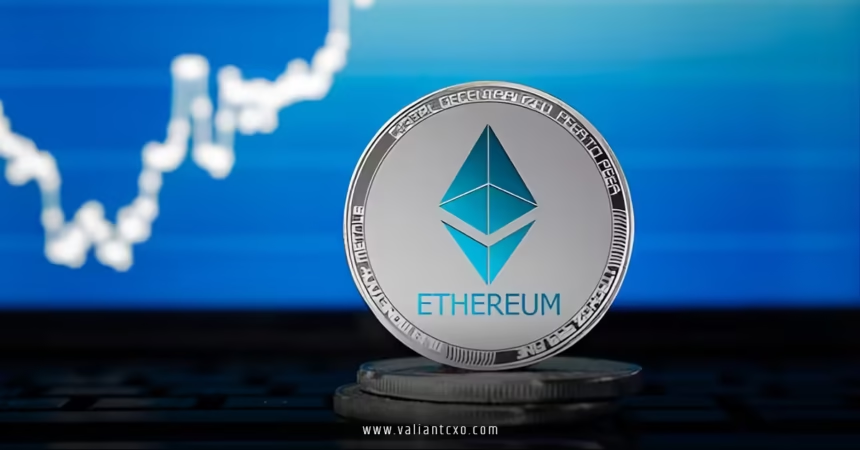Ethereum price market cap and volume – these three metrics are like the heartbeat, muscle, and blood flow of the entire crypto world, especially for ETH, the fuel powering decentralized dreams. If you’re dipping your toes into the blockchain pond or you’ve been swimming in it for years, understanding how Ethereum’s price dances with its market cap and trading volume can feel like cracking the code to a treasure map. Right now, as of October 11, 2025, Ethereum’s price hovers around $3,828 USD, with a market cap clocking in at a whopping $462 billion and a 24-hour trading volume surging past $92 billion. Yeah, those numbers aren’t just digits; they’re a snapshot of a network that’s revolutionized finance, art, and even gaming. But why does this matter? Because in the volatile crypto arena, these elements don’t just reflect value – they predict storms and sunny days ahead. Stick with me as we unpack this beast, from its roots to its rocket-fueled future, all while keeping it real and relatable, like chatting over coffee about your wildest investment wins (or wipeouts).
What Exactly Is Ethereum Price Market Cap and Volume? Let’s Break It Down Simply
Picture Ethereum as the bustling engine room of a massive digital ship. At its core, the Ethereum price is the current dollar value slapped on one single ETH token. It’s what you see ticking up or down on apps like CoinMarketCap or Coinbase – right now, that’s about $3,828 per coin, down a nerve-wracking 12% in the last day alone. But don’t let that dip fool you; ETH has clawed back from lows of $1,196 earlier this year to flirt with all-time highs near $4,955 just months ago.
Now, zoom out to market cap, short for market capitalization. This isn’t some fancy Wall Street jargon; it’s straightforward math: current Ethereum price multiplied by the total circulating supply of ETH coins. With roughly 120.7 million ETH out there (no hard cap like Bitcoin’s 21 million, thanks to ongoing issuance and burns), that lands us at $462 billion today. Think of market cap as the total “body weight” of Ethereum in the crypto gym – it tells you how hefty and influential this beast is compared to lightweight contenders like Solana or heavyweights like Bitcoin, which boasts over $2 trillion. A soaring market cap screams adoption; a dip? Well, it might signal whales (big investors) cashing out for a yacht fund.
And then there’s volume, the trading volume that keeps the party pumping. This measures how many ETH tokens changed hands in a set period – usually 24 hours. Clocking in at $92.7 billion lately, it’s like the crowd size at a rock concert: high volume means everyone’s buzzing, buying, and selling, which often juices up liquidity and price stability. Low volume? It’s a ghost town, where one big sell can tank the Ethereum price market cap and volume like a bad breakup rumor spreading through high school.
Why obsess over Ethereum price market cap and volume together? Because they’re intertwined like plot twists in a thriller novel. A price spike without volume is a fake-out rally; fat volume with steady market cap growth? That’s the real deal, signaling genuine hype from DeFi degens to institutional suits. As someone who’s watched ETH evolve from a scrappy 2015 launch to the backbone of Web3, I can tell you: ignoring these metrics is like driving blindfolded in a fog of FOMO.
The Basics: Why Ethereum Stands Apart in the Crypto Crowd
Ethereum isn’t just another coin; it’s a programmable paradise. Launched by Vitalik Buterin and his crew as an upgrade to Bitcoin’s “digital gold” vibe, ETH powers smart contracts – self-executing code that automates everything from loans to cat memes turned NFTs. This utility? It’s the secret sauce behind Ethereum’s enduring market cap dominance, second only to BTC. But let’s not sugarcoat it: high gas fees and scalability hiccups have tested our patience, much like waiting for your favorite band to drop that long-awaited album. Upgrades like the Merge in 2022 (swapping energy-guzzling proof-of-work for eco-friendly proof-of-stake) slashed emissions by 99% and set the stage for today’s Ethereum price market cap and volume surges.
A Rollercoaster History of Ethereum Price Market Cap and Volume
Buckle up, because Ethereum’s journey reads like a blockbuster: explosive highs, gut-wrenching crashes, and phoenix-like rises that keep us hooked. Back in 2015, when ETH debuted at pennies, its market cap was a measly $788,000 – smaller than your average garage sale. Fast-forward to 2017’s ICO boom, where initial coin offerings flooded the network. Ethereum price market cap and volume exploded; ETH hit $1,400 by January 2018, pushing market cap to $138 billion and daily volume to billions. It was party time – until the crypto winter of 2018 froze everything, slashing price to $85 and volume to crickets.
The 2021 Boom: NFTs, DeFi, and Volume on Steroids
Ah, 2021 – the year Ethereum became the internet’s sugar rush. DeFi protocols like Uniswap turned ETH into the grease for billion-dollar liquidity pools, while NFTs (remember CryptoPunks?) minted millionaires overnight. Ethereum price market cap and volume? Through the roof. Price peaked at $4,891 in November, market cap ballooned to $570 billion, and 24-hour volume routinely topped $100 billion. It was like Ethereum threw a global rave, with everyone from artists to venture capitalists piling in. But correlation isn’t causation – that surge rode Bitcoin’s halving wave, macroeconomic stimulus checks, and FOMO fever. I remember refreshing charts at 3 a.m., heart racing as volume bars lit up like fireworks.
2022-2024: The Bear Market Blues and Rebirth
Enter the “crypto winter” of 2022: Terra’s collapse, FTX implosion, and Fed rate hikes turned Ethereum price market cap and volume into a horror story. Price cratered to $885, market cap halved to $106 billion, and volume dried up to $5-10 billion daily. Ouch. Yet, like a boxer taking hits but eyeing the comeback, Ethereum upgraded relentlessly. The Merge stabilized supply via fee burns (EIP-1559), and Layer 2 solutions like Optimism slashed fees, boosting usability. By 2023, tentative recovery kicked in; price climbed to $2,100, market cap to $250 billion, volume inching back. 2024? ETF approvals in the US funneled billions from BlackRock and Fidelity, reigniting the fire.
2025 So Far: Record Inflows and Upgrade Hype
This year, as of October 2025, Ethereum price market cap and volume are scripting a redemption arc. Spot ETH ETFs have sucked in $1.6 billion weekly at peaks, outpacing Bitcoin’s outflows. Price oscillated from $1,196 in January to $4,955 in August, now settling at $3,828 amid a 12% dip – blame it on profit-taking post-rally. Market cap? Steady at $462 billion, reflecting matured supply dynamics. Volume? A beast at $92 billion daily, up 7x from early-year lows, thanks to DeFi TVL hitting $150 billion and tokenized assets exploding to $11.7 billion on-chain. It’s not all smooth sailing – regulatory jitters and macro headwinds like inflation linger – but the network’s blob capacity doubled via Pectra upgrade in May, paving for cheaper, faster txns. If history’s any guide, these dips are buy-the-fear moments before the next leg up.

The Magic (and Mayhem) Behind Ethereum Price Market Cap and Volume Drivers
What makes Ethereum price market cap and volume tick like a Swiss watch on espresso? It’s a cocktail of tech wizardry, human greed, and global chess moves. Let’s dissect the big players, because spotting patterns here is like having a cheat code for your portfolio.
Tech Upgrades: The Unsung Heroes Fueling Growth
Ethereum’s roadmap is its superpower. The upcoming Fusaka hard fork in November 2025? It’s set to 8x data blobs, slashing L2 fees further and supercharging scalability to 100,000 TPS. Past upgrades like Dencun in March 2024 already juiced volume by making rollups dirt cheap. Result? More dApps, higher on-chain activity, and – boom – Ethereum price market cap and volume climb as demand for ETH (for gas fees) spikes. Analogy time: It’s like upgrading your old clunker car to a Tesla – suddenly, everyone’s lining up for a ride, pumping your resale value.
Institutional Cash and ETFs: Whales in the Pool
Gone are the days of solo retail traders; now, suits from Goldman Sachs are staking billions. ETH ETFs, approved mid-2024, have funneled $303 million in single-day inflows, directly inflating market cap. Staking yields at 4-5% lock up 28% of supply, curbing sell pressure and stabilizing price. When JPMorgan or State Street announce ETH treasuries, volume erupts – we’ve seen 25% DEX spot volume on Uniswap alone. But beware: A Fed pivot to higher rates could spook these big fish, tanking Ethereum price market cap and volume overnight.
Macro Vibes and Regulatory Ripples
Crypto doesn’t float in a vacuum; it’s tethered to the real world. Inflation at 3% and Bitcoin halving echoes ripple through – when stocks dip, ETH often follows as a risk asset. Regulatory wins, like the Genius Act clarifying staking, boost confidence; crackdowns? They chill volume. Geopolitics too: Trump’s 2025 pro-crypto stance has traders optimistic, potentially adding trillions to total market cap. And don’t sleep on sentiment – a viral tweet from Vitalik can swing daily volume by 20%.
Supply Shenanigans: Burns, Issuance, and Scarcity Plays
EIP-1559’s fee burn has torched over 4 million ETH since 2021, making supply deflationary during high-volume periods. With issuance at 0.5% annually post-Merge, it’s like Ethereum’s on a diet – leaner supply means punchier price reactions. High volume days burn more, indirectly supporting market cap growth. Rhetorical nudge: Ever wonder why ETH feels scarcer than Bitcoin lately? Blame the pyre of burned tokens.
Peering into the Crystal Ball: Ethereum Price Market Cap and Volume Predictions for 2025 and Beyond
Fortune-telling in crypto is part art, part science – and mostly gut feel. But crunching data from Finder, WalletInvestor, and CoinPedia, here’s the scoop: By end-2025, consensus pegs ETH price at $5,000-$6,925, pushing market cap to $600-$800 billion if supply holds. Volume? Expect $150 billion daily averages, fueled by Fusaka’s scalability and RWA tokenization hitting $50 billion.
Short-Term Outlook: Q4 2025 Turbulence or Triumph?
Through December, watch for $4,750-$5,400 if it holds $4,600 support. ETF inflows and holiday DeFi spikes could double volume, but a Bitcoin correction might drag Ethereum price market cap and volume down 15%. Bull case: Spot ETF approvals in Asia ignite a rally; bear? Regulatory FUD from SEC delays.
Long-Haul Visions: 2030 and the Multi-Trillion Dream
By 2030, analysts like Standard Chartered eye $14,000-$35,000 per ETH, ballooning market cap to $1.7-$4 trillion. Why? Web3 ubiquity – think Ethereum powering global remittances, DAOs running corps, and NFTs as digital deeds. Volume could hit $1 trillion daily as L1 scales 10x via stateless clients. But risks loom: Competition from Solana’s speed or quantum threats. Optimistically, if Ethereum captures 20% of a $10 trillion tokenized asset market, we’re talking moonshot territory.
I’ve traded through cycles, and here’s my two cents: Bet on utility over hype. Ethereum price market cap and volume will thrive as long as devs build and users flock.
Wrapping It Up: Why Ethereum Price Market Cap and Volume Still Steals the Show
From its humble 2015 spark to today’s $462 billion juggernaut, Ethereum price market cap and volume encapsulate a saga of innovation amid chaos. We’ve traced the booms of DeFi and NFTs, the bruises of bears, and the beacons of upgrades like Fusaka. Key takeaway? These metrics aren’t static scoreboards; they’re dynamic signals of adoption, liquidity, and potential. Whether you’re a newbie eyeing your first ETH or a vet stacking for the long game, tune into Ethereum price market cap and volume – they’re your compass in crypto’s stormy seas. The network’s resilience screams opportunity: With staking locking supply, ETFs pouring fuel, and scalability unlocking masses, ETH isn’t just surviving; it’s evolving. So, what’s your move? Dive in, stay informed, and remember – in this game, patience pays dividends bigger than any quick flip. Here’s to riding the next wave together.
Frequently Asked Questions (FAQs)
What is the current Ethereum price market cap and volume as of October 2025?
Right now, Ethereum’s price sits at about $3,828 USD, with a market cap of $462 billion and 24-hour volume exceeding $92 billion. These figures fluctuate wildly, so check live trackers for the latest pulse.
How does trading volume impact Ethereum price market cap and volume trends?
High volume acts like rocket fuel, amplifying price moves and bolstering market cap by drawing more liquidity. Low volume? It breeds volatility, where small trades can swing Ethereum price market cap and volume big time – think crowded elevator vs. empty room.
What factors could drive Ethereum price market cap and volume higher in late 2025?
Look to Fusaka upgrades for cheaper txns, ETF inflows from institutions, and macro tailwinds like rate cuts. If DeFi TVL doubles, expect Ethereum price market cap and volume to surge as usage skyrockets.
Is Ethereum’s market cap sustainable given its unlimited supply?
Absolutely – burns from EIP-1559 make it deflationary during peaks, curbing inflation. Ethereum price market cap and volume growth hinges on demand outpacing issuance, which history shows it does during bull runs.
How can beginners track Ethereum price market cap and volume effectively?
Start with free tools like CoinGecko or TradingView for real-time charts. Set alerts for volume spikes, and follow Ethereum price market cap and volume via apps – it’s like having a crypto dashboard in your pocket, minus the overwhelm.
Read More:valiantcxo.com


